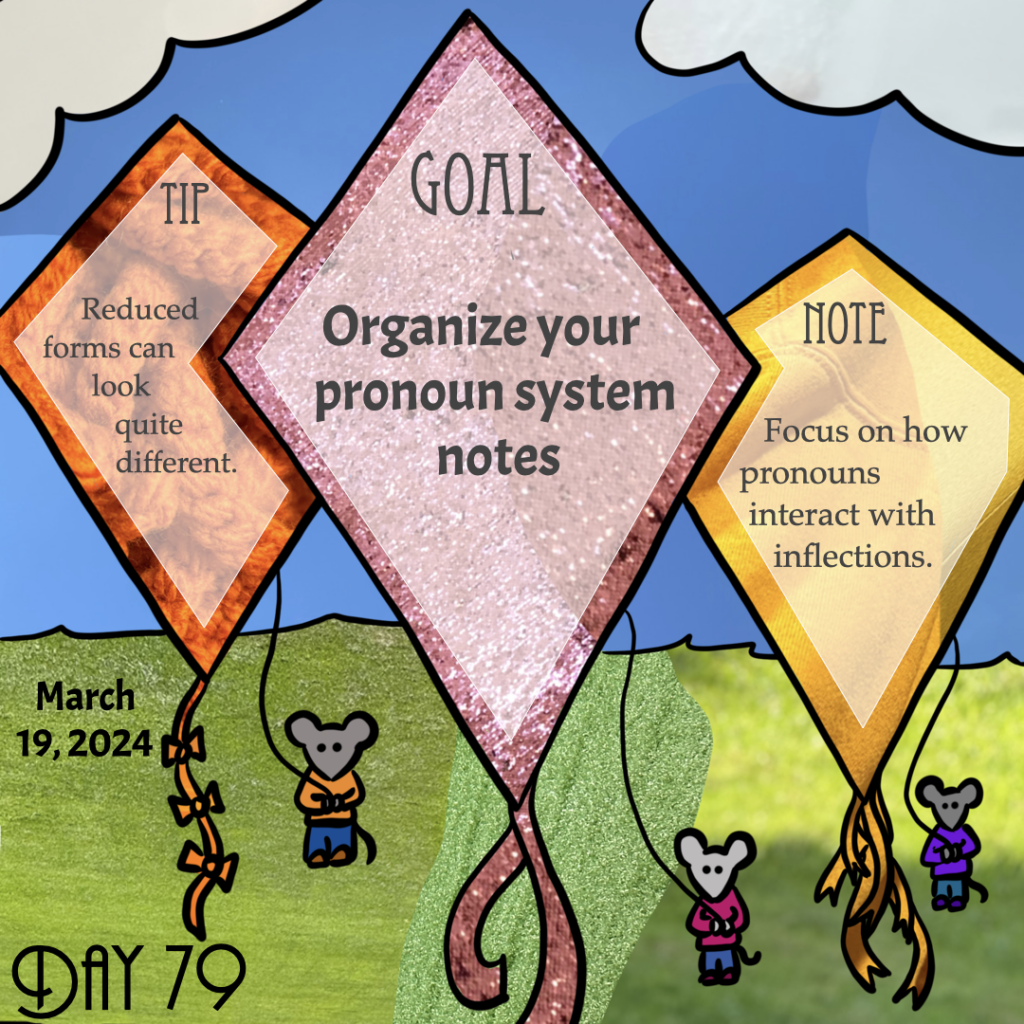
Goal: Organize your pronoun system notes
Note: Focus on how pronouns interact with inflections.
Tip: Reduced forms can look quite different.
Work focus: Organize/Plan/Structure
I know, I know, I know. I’ve asked you to spend quite a few days creating and thinking about pronoun forms, yet I’m asking you to spend today reviewing everything you’ve just done. That’s because it is easy to forget to consider all the nominal inflections you created and how they might interact with your pronoun system.
Maybe you’re happy with your system and all the forms you’ve already built into it. If so, great! Spend some time cleaning up notes or making new words (and entering them into your vocabulary). Maybe you decided to forego nominal inflections (opting instead for stricter word order and periphrastic constructions), so your pronoun system is quite minimal. So you may not need to review much (if anything) today. If that’s the case, spend the day creating more vocabulary or translating a few more noun phrases to show off how your language works.
But maybe you’re looking at your system and thinking you might want to make changes, especially in the ways your pronouns interact with the inflections. Look for areas where it makes sense to phonologically reduce your pronoun forms—remember these forms get used a lot (and often in unstressed positions), and they are prone to phonological reduction. One cool thing about reducing the forms is that they can end up looking quite different from their original starting point, thus creating more diversity in your system.
If that’s not something you’re interested in, that’s okay, too. It may make more sense for you and your language to have fully inflected forms that phonologically retain their connections to their older forms.
